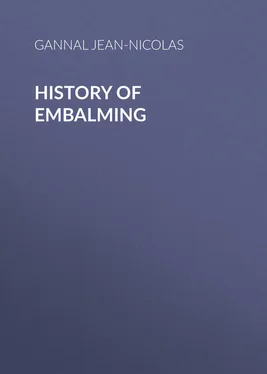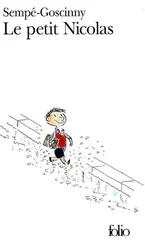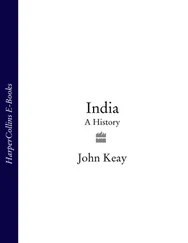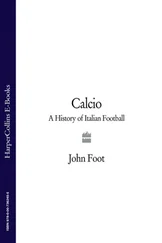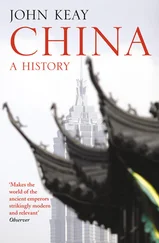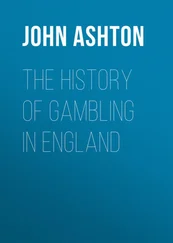Jean-Nicolas Gannal - History of Embalming
Здесь есть возможность читать онлайн «Jean-Nicolas Gannal - History of Embalming» — ознакомительный отрывок электронной книги совершенно бесплатно, а после прочтения отрывка купить полную версию. В некоторых случаях можно слушать аудио, скачать через торрент в формате fb2 и присутствует краткое содержание. Жанр: foreign_antique, foreign_prose, на английском языке. Описание произведения, (предисловие) а так же отзывы посетителей доступны на портале библиотеки ЛибКат.
- Название:History of Embalming
- Автор:
- Жанр:
- Год:неизвестен
- ISBN:нет данных
- Рейтинг книги:5 / 5. Голосов: 1
-
Избранное:Добавить в избранное
- Отзывы:
-
Ваша оценка:
- 100
- 1
- 2
- 3
- 4
- 5
History of Embalming: краткое содержание, описание и аннотация
Предлагаем к чтению аннотацию, описание, краткое содержание или предисловие (зависит от того, что написал сам автор книги «History of Embalming»). Если вы не нашли необходимую информацию о книге — напишите в комментариях, мы постараемся отыскать её.
History of Embalming — читать онлайн ознакомительный отрывок
Ниже представлен текст книги, разбитый по страницам. Система сохранения места последней прочитанной страницы, позволяет с удобством читать онлайн бесплатно книгу «History of Embalming», без необходимости каждый раз заново искать на чём Вы остановились. Поставьте закладку, и сможете в любой момент перейти на страницу, на которой закончили чтение.
Интервал:
Закладка:
J.-N. Gannal
History of Embalming / and of Preparations in Anatomy, Pathology, and Natural Hiistory
NOTE OF THE TRANSLATOR
It will be reasonably anticipated from the title of the present volume, that it embraces subjects of equal interest to the general and professional reader, as well as indispensable material for the researches of the practical anatomist and student of natural history.
The latter class will find in it all the requisite details for a successful prosecution of its arduous, intricate, but favorite pursuits; whilst those of its patrons of the former class, cannot fail to be interested in the various and important facts and discussions embraced in a general history of embalming from the earliest ages to the present period, so inseparably connected with the moral and physical history of our own species.
An additional subject of interest to all classes will be acknowledged in the facts and observations elicited by the arduous and industrious researches of the author, whilst investigating the new process of embalming , which has led to such happy results to the students of anatomy and natural history. The great importance, in all respects, of M. Gannal’s discovery, has been fully and adequately acknowledged by the different commissions appointed by the Institute of France, and the Royal Academy of Medicine, who have awarded to its author both honour and profit, as a real benefactor to science, to the progress of which he has so substantially added. The current of the text, together with the notes and illustrations of the translator, embraces all the discoveries of the age, of this nature, of value to the practical anatomist and naturalist, consisting both of original observations, and of highly important information contained in the standard works of De Bils, Ruysch, Swammerdam, Clauderus, De Rasière, Dumèril, Hunter, Breschet, Pole, Margolin, Bell, Cloquet, Swan, Parsons, Horner, &c.
Concerning the nature, extent, and merits of the new discovery of M. Gannal, the translator, has spoken in the appendix, from a personal acquaintance with the author and a minute examination of the collection of embalmed objects contained in his cabinet at Paris.
Philadelphia, September, 1840.
To Messrs. Members of the Academy of Sciences
Gentlemen, – From the commencement of my researches upon the preservation of animal matters, you have encouraged me by extending your support to efforts which my own resources would not perhaps have enabled me to continue; in this path strewn with so many difficulties, and disgusts, I have endeavoured to show myself worthy of your high protection.
At a later period, when I was able to offer to physicians and naturalists methods of preservation superior to those previously known, you conferred upon me the prize founded by Monthyon. I have pursued my researches with the view of adapting my process to the art of embalming; the happy results which I have obtained have inspired me with the idea of comparing my mummies with those obtained by processes different from my own.
Finally, I have extended this parallel between my processes and those formerly applied, to preparations of healthy anatomy, to pathological anatomy, and to natural history.
My labour terminated, I have thought it my duty to dedicate to you a work the publication of which is due to the decision which your wisdom and justice have dictated.
Allow me, gentlemen, to consider this dedication as a new encouragement which you are willing to confer upon me, and trust in the respectful sentiments with which I have the honour to be, your very humble and very grateful servant,
Gannal.PREFACE
I had terminated my first researches upon the preservation of animal matters, and proposed to publish them; my notes were collated and my work prepared, when the idea struck me that in place of confining myself to the exposition of the results which I had obtained, I might, with advantage to science, present a history of the art of embalming from the highest antiquity to our time, and compare my processes, with those in use for the preservation of objects of normal anatomy, pathological anatomy, and natural history.
This determination has decided me to publish a volume, in place of a pamphlet of fifty pages.
I had no model to follow, for no author had re-united in the same book, the elements of which I wished this might be composed. I found myself, therefore, necessitated to collect together in the following pages the materials scattered throughout numerous works.
For embalming, Plutarch , Herodotus , Diodorus Sicculus , Stacy , Pliny , Cicero , Porphyrus , Prosper Alpin , Cassien , Clauderus , Penicher , Baricel , Rodiginus , Corippus , Gryphius , Crollius , the Reverend Fathers Kircher and Ménestrier , De Maillet , Volney , Rouelle , the Count de Caylus , MM. Pariset , Rouyer , Bory de Saint Vincent , and numerous other authors, have furnished me with descriptions and materials, which I was obliged to put in order and bring before the eye of the reader, in order to present to him a useful lecture, and in some sort preparatory to my own ideas. As my point of departure was scientific data, opinions and facts have come in place as the recital needed them; and thanks to this idea, which has never abandoned me, the numerous materials from which, in the commencement, I feared disorder and confusion, have come, as if by consent to dispose themselves in order; so great is the influence of a general idea in the arrangement of facts. I believe that I have reduced to exact proportions the art of embalming among different nations. My predecessors had referred too little to nature , too much to man , in the appreciation of Egyptian embalming; they had not sufficiently estimated the difficulties of the same practice among nations less favoured by climate. Facts reconsidered and interrogated with the aid of lights afforded by the recent progress of physics and chemistry, have furnished us with consequences naturally resulting from their attentive examination.
When the history of an art is followed step by step, as we have done for that of embalming, one is astonished at a psychological fact, equally applicable to every case – we see how idle and common place the human mind is, and how little prone it is to spontaneous activity. The gross and inconsiderate imitation of the Egyptian processes during a long series of ages, is one of the most remarkable examples of this disposition.
Trials directed by a spirit of analysis and critical examination have enabled me to substitute for complex operations, for long difficult and expensive operations, most frequently inefficacious, a simple means, of a determined action, and submitted for several years to the examination of committees appointed by the Academy of Sciences and the Academy of Medicine.
In order to trace the history of the preservation of objects of anatomy and natural history I have had no occasion to go back to an epoch distant from our own; for this science is altogether new. Beyond the discoveries of Chaussier, on the preservative properties of the deuto-chloride of mercury, the labours of MM. Dumèril, Cloquet and Breschet, there is very little existing on this subject. So that I have concluded, after a complete exposition of the preservative means given by these authors, it only remained for me to propose the preservative substances which, after numerous experiments, have appeared to me preferable to those which they have recommended. They possess a peculiar merit for the formation of cabinets of natural history, that of reducing the expense to at least one-nineteenth.
Читать дальшеИнтервал:
Закладка:
Похожие книги на «History of Embalming»
Представляем Вашему вниманию похожие книги на «History of Embalming» списком для выбора. Мы отобрали схожую по названию и смыслу литературу в надежде предоставить читателям больше вариантов отыскать новые, интересные, ещё непрочитанные произведения.
Обсуждение, отзывы о книге «History of Embalming» и просто собственные мнения читателей. Оставьте ваши комментарии, напишите, что Вы думаете о произведении, его смысле или главных героях. Укажите что конкретно понравилось, а что нет, и почему Вы так считаете.
